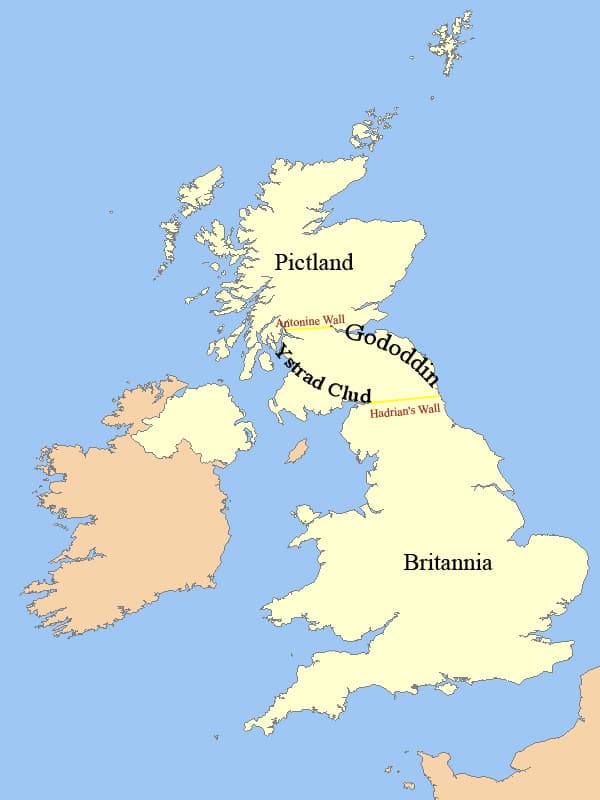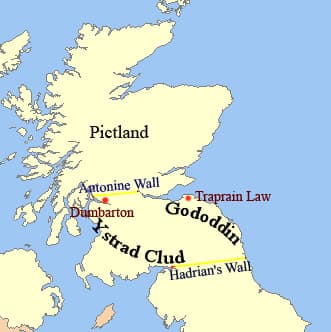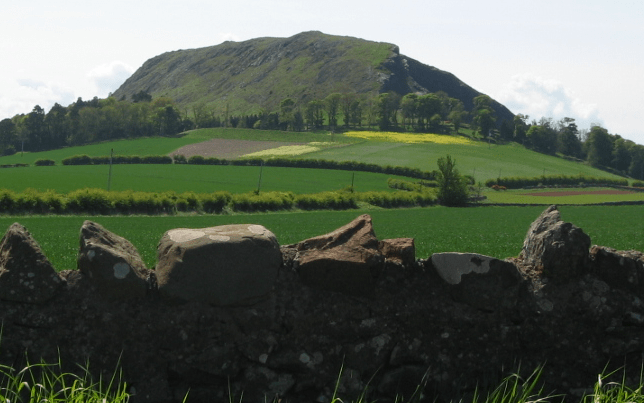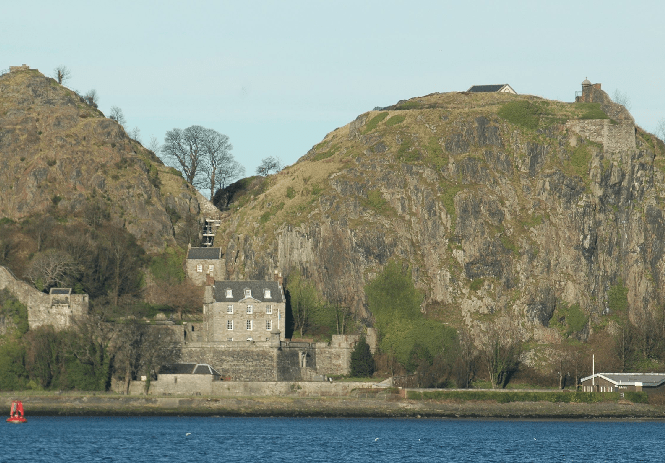As you can see, the area known as Pictland (inhabited by the ancient Scots, The Picts) was located above the old Roman Wall 'Antonine', which had been built to keep the Picts out of Roman territory.
The modern-day Scottish Lowlands ventured as far south as Hadrian's Wall, located in Northumberland. Hadrian's Wall, much like the Antonine Wall, had been built to defend the Roman territory from the Picts. You can read more about the history behind the walls here.
But what happened to the Romans?
The island of Britain was difficult to keep free from raiding barbarians, both native and foreign, and was vulnerable to coastal attacks. In 410 AD, after mounting pressure from invasions, Emperor Honorius of the Roman Empire made the decision to abandon his territory of Britannia, and return the majority of his legions to Rome, leaving the natives to fend for themselves against the barbarian tribes.
The Romano-Britons in Britannia (as we can see above) had been under the control of Rome for over 300 years. With the island left without a leader and a vast amount of land without ownership, it did not take long for anarchy to ensue.
Irish barbarians travelled over the waters and raided modern-day Wales. The Picts moved south of Hadrian's Wall and invaded Britannia. The few Roman officials that decided to stay in Britannia attempted to form sub-kingdoms for themselves; those who failed to establish territory were assassinated by newly powerful clans.
By 425 AD, fifteen years after the Romans left Britannia, the area of modern day Scotland was split into three areas:
Pictland
Gododdin
Ystrad Clud
You can see these closer below:







